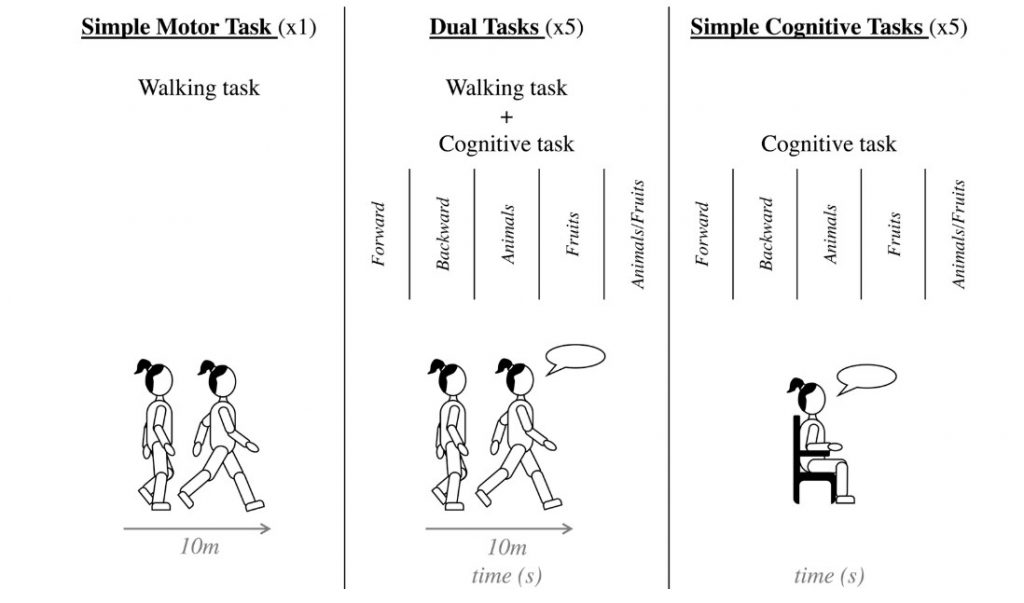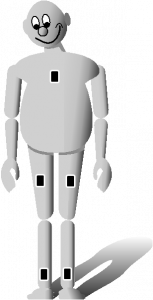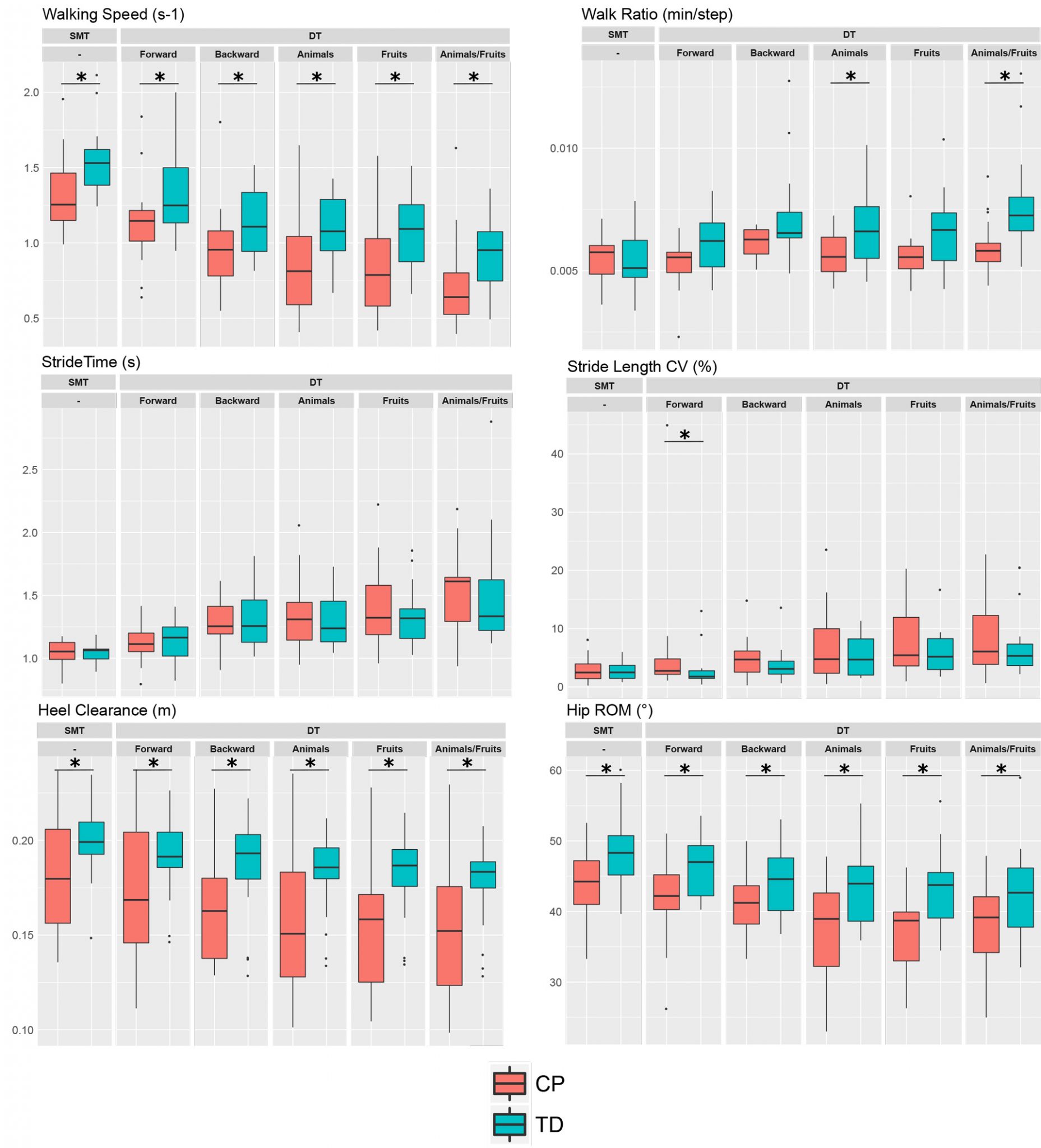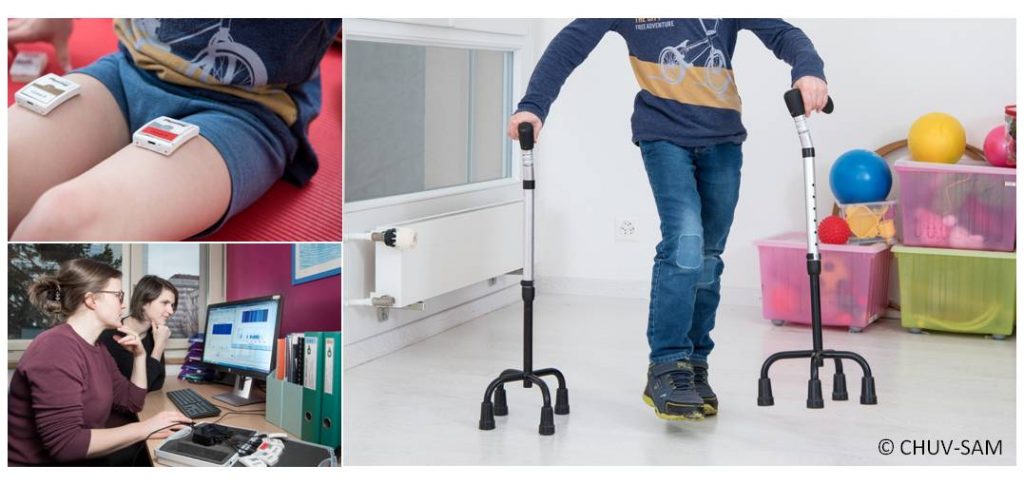Gait Analysis in children with Cerebral Palsy: bridging the gap between laboratory and real life
- Contact person: Lena Carcreff
- People involved: Lena Carcreff, Anisoara Ionescu
- Partners: HUG, CHUV
- Funding source: Fondation Leenaards, Fondation Science for smile, Fondation Paralysie Cérébrale
Overview
Cerebral palsy (CP) is the most frequent motor disorder in childhood with a neonatal prevalence of 2:1000 live births. Patients with CP can exhibit not only a range of motor disorders but also cognitive impairments. Clinicians require a comprehensive and objective evaluation of movement impairments, their possible causes and consequences on daily life, first to establish treatment strategies but also to adequately monitor the outcomes of these treatments.
Clinical Gait Analysis (CGA) is usually performed in laboratories with dedicated devices such as the optoelectronic motion capture system. It allows precise quantification of the gait deviations. CGA has widely been studied in children with CP and prove to be very efficient to improve the understanding of their motor impairments. However, CGA is not likely to represent the daily-life gait performances.
The overall goal of the project is to objectively assess the differences between gait in laboratory settings and gait in real life, in order to have a better understanding of daily-life difficulties for children with cerebral palsy. Bridging the gap of knowledge between both environments is expected to help the clinicians to propose more targeted treatments, thus enhance the patients’ medical care and quality of life.
Methods:
1st protocol:
Everyday life activities involve performing concurrent cognitive and motor tasks which cause cognitive- motor interferences. A dual-task protocol (motor + cognitive tasks) has thus been set up in the laboratory to better reflect a real-life walking situation.
Twenty children with CP and 20 typically developing children were evaluated with an optoelectronic system, following the protocol described in the following figure. The cognitive tasks were: ‘Forward’: counting forward from 0, ‘Backward’: counting backward from 50, ‘Animals’: enumerating animals, ‘Fruits’: enumerating fruits, ‘Animals/Fruits’: alternating animals and fruits.

2nd protocol:
Actual gait performances were measured in children’s daily life using wearable sensors.
Fifteen children with CP and 15 typically developing children were asked to wear 5 synchronized inertial sensors (Physilog4) in 2 different settings: the laboratory (simulating a CGA protocol) and their daily life, during 3 days.

Several gait parameters were extracted and compared between both environments.
Results:
1st protocol:
Gait performances decreased according to the difficulty of the cognitive task (following Figure). More results can be found in the published article which link is provided in the corresponding section.

2nd protocol:
The wearable system accuracy and precision was evaluated against the clinical standard of CGA (motion capture system) and the results are available in the published article which link is provided in the following section.
Results regarding the comparison of gait parameters between the laboratory and daily life settings are currently under the process of publication, they will be provided soon.
Publications:
The effects of dual tasks on gait in children with cerebral palsy
Gait & Posture. 2019. Vol. 70, p. 148-155. DOI : 10.1016/j.gaitpost.2019.02.014.
What is the Best Configuration of Wearable Sensors to Measure Spatiotemporal Gait Parameters in Children with Cerebral Palsy?
Sensors. 2018. Vol. 18, num. 2, p. 394. DOI : 10.3390/s18020394.
